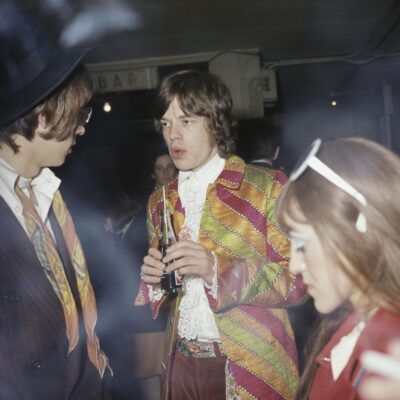
Fashion & History 15.04.2025
26.11.2020
1970s1980sbackstagefashion photographyrunway archive
From the viva voce of Paul van Riel, a presentation of his latest project reflecting – visually and with heartfelt words – on his years as catwalk photographer
Photographing ready-to-wear catwalk shows in Paris in the nineteen seventies and eighties was a great exercise in cultivating the noble art of patience. In the tight schedule of up to ten or more presentations for buyers and media on any given day on the show calendrier set up by the Chambre Syndicale, the slightest delay of a start in the early morning would effect ‘showtime’ throughout that day. A model overslept, hairdresser or makeup person fell ill, technical problems (or a combination of all these) and the last show of the day would finish near 11 pm. or later, more often than not.
Several of the more in vogue models would walk three or four shows a day with complete ‘makeovers’ of hair and visagie in different locations around town with fittings elsewhere in between. Long delays were a given, allowing us photographers ample time to discuss amongst ourselves or with clients work, home, much needed vacations and things of this sort. Of course, next to a lot of gossip or a quick runway nap…
Nice for a day or two, but I soon started to use my time more wisely (inquisitive type) – and hit the backstage scene. Special skills were required there, as some of the houses did not appreciate curious onlookers (couldn’t blame them…), so it was good to get to know some people working there: creative staff, helpers, some of the models.
It was also a good school to get a more clear insight in that fascinating, but somewhat hidden, world of fashion, by definition an example of appearance. Economics; the clash, or perfect harmony, of artistic creativity and sales/pr management. Lessons in psychology; hierarchy among just about every group there; models, assistants, owners, technicians, security, buyers and, yes, media. Stress control; some designers being totally relaxed, others succumbing to the pressure of presenting months of work by extended crews in a fifteen minute presentation. Arguments, fights, tears, all to stay on this side of the curtain.
I was surprised to see quite a few models reading books to kill time (maybe sick and tired, after all, of the gossip and in-fighting?), or crash on the floor under a blanket for a powernap. Others would be glued to a (rotary dial) telephone. All this made for great pictures, for which there actually was not much demand at the time. Some of the smaller houses expected the hired models to do most of their own makeup – all those ‘before and after’ mirror shots !
But it was not just about shooting people. Accessories like hats, gloves, belts, shoes, flowers and jewellery displayed on tables, the chronologic runway schedule with names plus small photos of the models, or petite, copied, numbered original design sketches, it all made for nice still life photography .
Backstage, a tolerated photographer had the whole field almost to himself – in contrast with the catwalk where dozens of pressed colleagues would scream at each other during a défilé to ‘get out of the way, sit down, don’t lean out’.
At the same time I had to make sure not to go back too late to my favourite spot along the catwalk, where friendly colleagues (yes, there were some!) would guard my heavy camera case with spare equipment, some lifesavers and up to fifty or sixties rolls of Kodachrome film – 36 exposures per roll.
Do I miss those hectic analogue days? Yes and no…
Backstage Paris 1974-1989 is a 60 page portfolio available here.
Paul van Riel has curated a selection of images from the portfolio for our Instagram page – go take a look, and read the fascinating stories behind each shot.